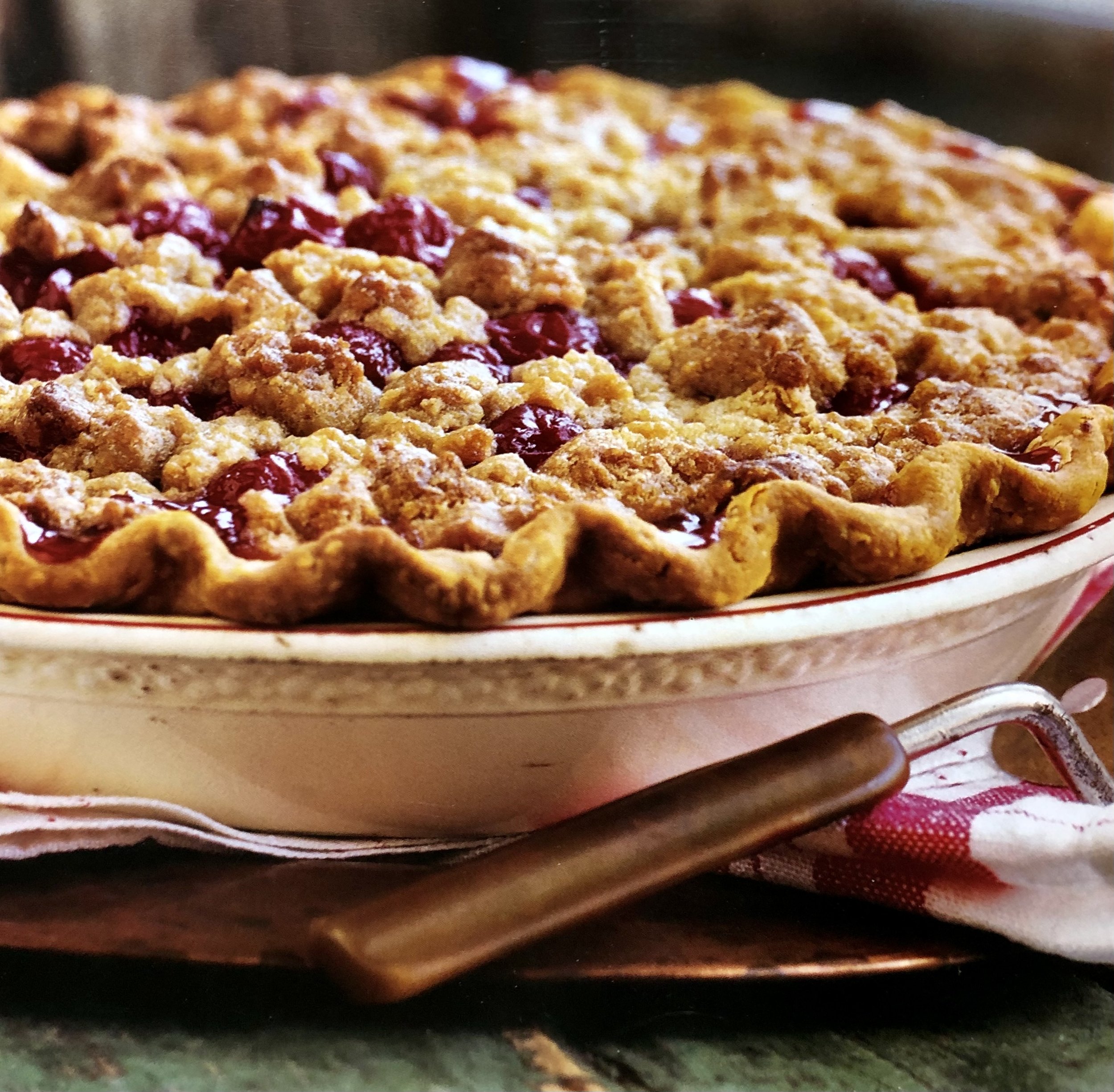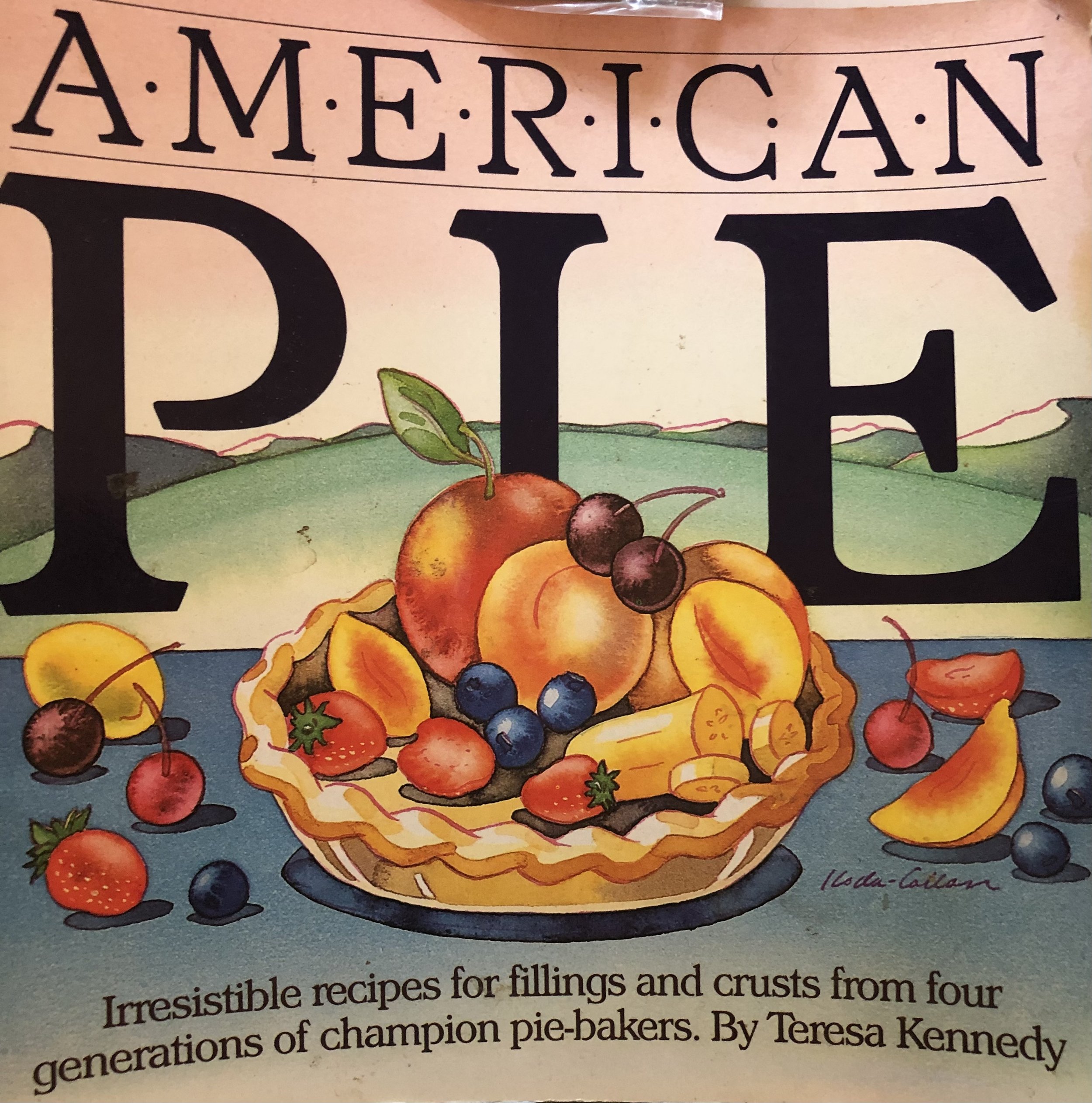On the Subject of Sour Cherries
The Montmorency cherry is a tart sour cherry that originated in the Montmorency Valley in France sometime before the 17th century. Today they are grown in Europe, Canada, and the United States—particularly in the Travis Bay region of Northwest Michigan and Door County, Wisconsin—as well as in parts of Indian Administered Kashmir in South Asia. And for more than a century a Montmorency cherry trees grew on the Beckmeyer farm in Hartsburg, Missouri.
I tasted my first, fresh-off-the-tree sour cherry in June 2006 when Al and Erna Beckmeyer’s Montmorency cherry trees—the largest more than half a century old—were laden with a bumper crop of sour cherries. Like the Chardonel, Norton, and Chambourcin wine grapes grown by their son Orion and his wife Barbara on their adjacent family farm, Al and Erna’s Montmorency “cherry pie” sour cherries had to be harvested at the moment of peak ripeness. When that moment arrived, the word went out over the Hartsburg hills and bottoms to come pick cherries soon as possible—before eager birds impatient to feast on the tempting red fruit stripped the branches clean.
That month, I had a call from Barbara saying it was once again cherry-picking time and Erna’s Montmorency cherry tree needed pickers. Thrilled, I gathered containers and drove to the Beckmeyer Farm without a moment’s hesitation. Pickers had stripped two small trees the day before, but the old parent tree stood waiting for anyone with time to spare. Orion set up ladders for me, then left me to my morning’s meditation. For the next two hours, I was alone with the birds and the bees while the morning sun warmed my freckled shoulders and the occasional breeze cooled the sweat beading along my brow.
That day, I picked cherries off branches so heavy with fruit that they touched the ground and climbed ladders to reach the sun-kissed, reddest, sweetest cherries at the top of tree. From atop a tall ladder, I had a birds-eye view of the shiny corrugated Beckmeyer Farm grain bins just across the road. Beyond them, hills roll gently toward the Missouri River as it winds its way toward Jefferson City. Three of the bins had been deconstructed and trucked up from the bottoms after the flood of 1993 knocked them catawampus. Then, on a night I will always remember, a dance was staged under a full August moon on the giant circles of concrete flooring poured in preparation for their reconstruction in the Hartsburg hills along Route A.
Over the course of a morning picking, Barbara and I shared news and exchanged ideas on what to do with our harvest. As noon approached, I drove home with 4 large Central Dairy ice cream tubs filled with juicy cherries nested in the bed of my cherry red Chevy Durango pickup truck. Then it was time to get to work. Picking, for anyone familiar with this heartland summer tradition, is just the first step in the labor-intensive journey one must be willing to undertake before cherries can be canned as a jam or preserve, boiled and reduced to a bounce, or baked and latticed into a pie. Pitting—an arduous, time-consuming, one-cherry-at-a-time, hand-eye coordination-challenging, juice-all-over-the-place operation—comes next.
I’d filled three large bowls to the brim with cherries. A deep-dish cherry pie takes 4-5 cups of the fruit. My base of operation was the kitchen sink where I’d positioned a bowl of cherries, a dish for the pits, and a large measuring cup to receive the pitted cherries. My cherry pitter is a hand-held, scissor-like tool into which you insert a single cherry. When the handle is closed, a spike drives the pit out of the cherry and through a small opening at the base of melon-ball sized cup where it is nested.
Two hours later, you have a pile of cherry pits and approximately eight cups of pitted cherries—enough for two small pies or one and a half deep-dish pies. During that repetitive process, I practiced ballet in place (pliés in third position while facing the sink), and meditated on a moment that morning when reaching up for a cluster of red cherries and green leaves, I was struck by the true blueness of the June sky.
Readers, for a Sour Cherry Pie recipe, I turned to Teresa Kennedy’s “American Pie” cookbook. For the filling, she combines the following ingredients:
1 ¼ cups sugar for fresh cherries, 1 1/3 cups for canned cherries
5 tablespoons all-purpose flour
4 cups fresh sour cherries, pitted, or 3 cups canned drained tart cherries (reserve the liquid)
¼ cup water, or ½ cup liquid from canned cherries
½ teaspoon almond extract (optional for fresh cherries)
2 tablespoons lightly salted butter
Pour filling into pie dough pressed into a 9-inch pan, top with a crumb topping or lattice top strips of pie dough, and bake 40 minutes in a preheated 400-degree oven.
That sour cherry pie almost three decades ago was a beauty, shared with our longtime Breakfast Creek neighbor Louise Dusenbery who will celebrate her 100th birthday this month. Sour cherries are pucker-up treasures of summer guaranteed to taste sweeter if baked in a cobbler or pie and shared with old friends.






